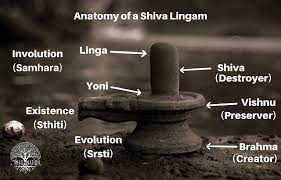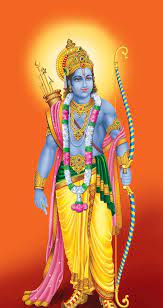Article: The Mystical Aspects of Lord Shiva

The Mystical Aspects of Lord Shiva
In the vast pantheon of Hindu deities, Lord Shiva stands as a symbol of mysticism, transcendence, and the divine balance between creation and destruction. Known as the "Destroyer" in the Holy Trinity alongside Brahma, the "Creator," and Vishnu, the "Preserver," Shiva's enigmatic nature has fascinated seekers, philosophers, and artists for millennia. In this blog, we will explore the mystical aspects of Lord Shiva that make him a profound and revered figure in Hinduism.
The Symbolism of Lord Shiva

Shiva's symbolism is rich with spiritual depth and mysticism:
-
The Third Eye: Shiva is often depicted with a third eye on his forehead, symbolizing his inner vision, knowledge, and insight. It represents the ability to see beyond the physical world into the realms of the spirit.
-
Ashes: Shiva smears his body with ashes, known as "bhasma." These ashes symbolize the transient nature of life and the ultimate end of all things. They remind us of the impermanence of the physical world and the eternal nature of the soul.
-
Crescent Moon: The crescent moon adorns Shiva's matted hair, symbolizing the passage of time and the waxing and waning of the lunar cycle. It serves as a reminder that life is cyclical, and like the moon, we experience phases of growth, decline, and renewal.
-
Snake: A snake wrapped around Shiva's neck represents his mastery over the primal energy (kundalini) that resides within all living beings. It signifies his control over desire, ego, and the baser instincts of human nature.
-
Trident: Shiva's trident (trishul) represents the three fundamental aspects of existence: creation, preservation, and destruction. It symbolizes the cosmic balance of life and the cyclical nature of the universe.
The Nataraja: Lord of the Dance

One of the most iconic representations of Lord Shiva is the Nataraja, the Lord of the Dance. In this form, Shiva is depicted dancing within a circle of fire, symbolizing the cosmic cycle of creation and destruction. The dance is known as the "Tandava," with two aspects: the Ananda Tandava, which represents the joy of creation, and the Rudra Tandava, symbolizing the wrathful dance of destruction.
Shiva's dance teaches us that the universe is in a constant state of flux, and the rhythm of life is a divine dance where he both creates and destroys. It highlights the mysticism of time, change, and the eternal cycle of existence.
The Meditative Lord
Shiva is also revered as the "Adi Yogi" or the "First Yogi." He is the eternal meditator who embodies the perfect balance between action and stillness. His deep meditative state represents the supreme level of consciousness and the ultimate union of the individual soul (Atman) with the universal soul (Brahman).
Shiva's association with Mount Kailash, considered the abode of the gods, emphasizes the significance of solitude and inner reflection. His serene meditation by the banks of the River Ganga signifies the need to connect with the divine through inner contemplation.
The Symbolism of Shiva Lingam

The Shiva Lingam, a cylindrical representation of Shiva, is a powerful symbol of the divine. It represents the formless and boundless nature of the Supreme Being. The base, called the "yoni," symbolizes the feminine creative energy, while the lingam itself represents the masculine, generative power.
Devotees worship the Shiva Lingam as a symbol of Shiva's unchanging and transcendent nature. It is a focal point for meditation and a reminder of the ultimate reality beyond all forms.
Conclusion
Lord Shiva, with his mystical symbolism and enigmatic nature, inspires seekers to delve deeper into the realms of spirituality and self-realization. His dance, meditative state, and symbolism reflect the profound wisdom of Hindu philosophy and the cyclical nature of existence. By embracing the mystical aspects of Shiva, one can explore the eternal and transcendent dimensions of the divine and embark on a spiritual journey toward self-discovery and liberation. Shiva, the embodiment of creation and destruction, invites us to join him in the cosmic dance of life.
